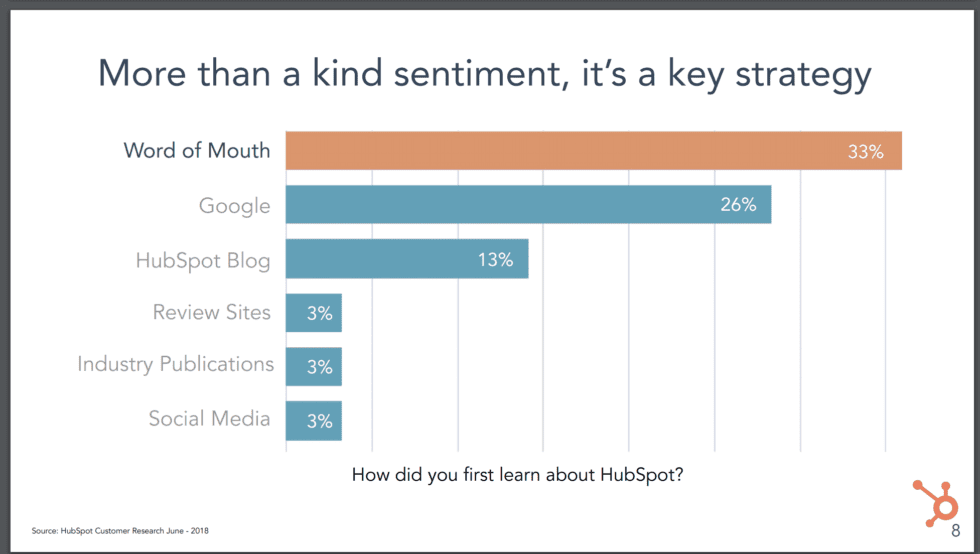How do you leverage “content marketing” to actually generate leads? There are 100,000,000+ blogs. And “worse” — there are 100,000,000+ new blog posts posted each month! GenerativeAI is only making it worse. And the last thing the world needs is another one AI or outsourced post about a boring vendor, telling the world how insightful they are, written by AI or their junior marketing manager. And yet … done right, even a basic blog can be a critical part of your marketing and sales toolkit. Even on Day 1.
 First, bear in mind, generally ignore people who tell you to be a “thought leader” very early on. Everyone wants to be this, and thought leadership is part of the standard vernacular of PR firms and seasoned corporate marketers. But on Day 1? It’s not impossible to pull this off, but unless you were already a guru in your space and well known before you started a corporate blog, it will take you years to earn this status, and the benefits from it. So 99/100, don’t chase this strategy unless you know for sure you can pull it off. You have too many other things to do.
First, bear in mind, generally ignore people who tell you to be a “thought leader” very early on. Everyone wants to be this, and thought leadership is part of the standard vernacular of PR firms and seasoned corporate marketers. But on Day 1? It’s not impossible to pull this off, but unless you were already a guru in your space and well known before you started a corporate blog, it will take you years to earn this status, and the benefits from it. So 99/100, don’t chase this strategy unless you know for sure you can pull it off. You have too many other things to do.
Second, realize that almost no one will read your blog. But a few might. And maybe that’s just 1 or 2 great prospects. Which is enough. Don’t try to adopt cookie-cutter higher traffic strategies when you have zero traffic. The magical part of SEO is that it’s open and indexed for you. Almost nothing else is.
A very personal example: SaaStr.com now gets 1m+ views a month now across all its media and has about 1m total social followers. When we put the first post up in 2012, we probably got 500 views that month. If that. But the first social like on the very first post was from Aaron Levie, CEO of Box. Quality over quantity, especially in the early days.
So with a new, zero/low-traffic corporate blog, how can you actually get and support leads?
Three thoughts:
- First, write a few posts — just a few — that authentically show how to solve a customer problem. Not hype pieces, or rambling outsourced pieces of content. But telling potential customers how to solve a problem.
Take a look at this example from RevenueCat.com, that they put up almost pre-revenue, on how to deal with the headaches of managing iOS subscriptions. An example that, importantly, performed:
It’s a detailed look at the challenges and problems in solving a real problem. Yes, it’s a real problem that is also what RevenueCat solves. But it’s an incredibly valuable piece of content. It (x) tells a prospect, (y) from someone that has actually done it at scale (although not yet a true subject matter expert), (z) how to solve an “unreasonably difficult” problem. And importantly, it’s not randomly pontificating on the Future of Mobile.
Fast forward to today, and RevenueCat manages the mobile API for 30,000 subscription-based apps. This post really, really worked in the early days.
You don’t need 100 posts a week here. Just a few, that maybe get a little SEO, that get you a few good leads.
- Second, “settle” for just supporting leads, not generating them. A corporate blog that shows you know how to solve customer problems may not generate leads like the RevenueCat example, at least not at first. But it can also be an amazing piece of collateral for prospects to dig in on when they are evaluating a new vendor. A few amazing blog posts that show how to solve their problems can help tip them from Maybe to Yes. It can be great air cover for a deal. That’s enough.
So in the end, don’t look for a corporate blog to be an amazing overnight source of 100s of leads. Probably, nothing is — you know this. But done right, authentically, with an initial focus at least on truly solving problems … a great, authentic corporate blog almost always works.
- Third, a final suggestion — you just can’t outsource it. You can’t outsource the very best, most authentic, most problem-solving content. There are 1000 great folks on UpWork that you can outsource blog posts to. But you also know in your heart, this won’t work either. Especially not before you have a brand yourself.
Finally, to do it right, you have to commit:
- So Fourth, set a firm cadence you commit to. One solid post a week. 6 a month. Whatever it is. At least so it’s budgeted. You can scale it up later over time.
Today, 13% of HubSpot customers still learn about them first from a blog post. Wouldn’t you like 13% more customers?
Finally, it doesn’t have to be great blog posts. It can be a podcast, or a YouTube channel, or whatever works for you. Wherever you have true passion, and can sustain putting out at least 2 truly great pieces of content a month.
But blogs often are the easiest place to start. Again, while SEO may not be quite what it once was — it’s still magical.
(note: an updated SaaStr Classic post)




